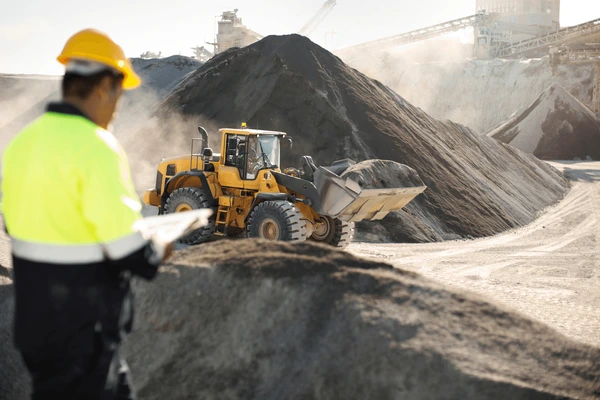South Africa mining towns
South Africa Mining Towns: Hubs of Mineral Wealth and Community Life
South Africa’s mining towns are the heart of the country’s mineral wealth, serving as centers for extraction, processing, and economic activity. These towns have historically played a pivotal role in shaping South Africa’s economy, culture, and social fabric. From the gold-rich streets of Johannesburg to the platinum hubs of Rustenburg , mining towns are synonymous with opportunity, resilience, and challenges. In this blog post, we will explore some of South Africa’s most prominent mining towns, their contributions to the industry, and the unique characteristics that define them.

The Role of Mining Towns in South Africa
Mining towns are built around mineral deposits and serve as operational hubs for mining companies. They provide employment, infrastructure, and services to support mining activities. However, these towns also face challenges such as environmental degradation, socio-economic inequality, and reliance on finite resources.

Prominent Mining Towns in South Africa
1. Johannesburg (Gauteng)
- Key Minerals : Gold, uranium.
- Overview : Known as the “City of Gold,” Johannesburg was founded during the late 19th-century gold rush. It remains a global center for mining finance and operations.
- Significance : Home to the Mponeng Gold Mine , the world’s deepest mine, and numerous corporate headquarters of mining giants like AngloGold Ashanti.
2. Rustenburg (North West Province)
- Key Minerals : Platinum group metals (PGMs), chrome.
- Overview : Rustenburg is often called the “Platinum Capital of the World” due to its vast reserves of PGMs.
- Significance : Hosts major mines like Impala Platinum and Lonmin (now part of Sibanye-Stillwater). The town thrives on mining but faces challenges related to labor disputes and community development.
3. Witbank (eMalahleni, Mpumalanga)
- Key Minerals : Coal.
- Overview : Witbank is a coal mining hub, supplying energy for South Africa’s power plants and exporting coal internationally.
- Significance : The town’s economy revolves around coal mining, though it grapples with environmental issues like air pollution and water scarcity.
4. Welkom (Free State)
- Key Minerals : Gold.
- Overview : Welkom is part of the Gold Fields region and was once a thriving gold mining town.
- Significance : While gold production has declined, Welkom remains a symbol of South Africa’s mining heritage. Efforts are underway to diversify its economy.
5. Klerksdorp (North West Province)
- Key Minerals : Gold, uranium.
- Overview : Klerksdorp is one of South Africa’s oldest mining towns, known for its rich gold deposits.
- Significance : The town continues to host active mines and serves as a base for exploration projects.
6. Krugersdorp (Gauteng)
- Key Minerals : Gold, limestone.
- Overview : Located near Johannesburg, Krugersdorp is home to significant gold mines and limestone quarries.
- Significance : The town balances mining activities with urban development, attracting both industrial and residential growth.
7. Carletonville (Gauteng)
- Key Minerals : Gold.
- Overview : Carletonville is another key player in South Africa’s gold mining industry, hosting deep-level mines like TauTona and Driefontein .
- Significance : Despite declining production, the town remains an important contributor to Gauteng’s mining output.
8. Phalaborwa (Limpopo)
- Key Minerals : Phosphate, copper.
- Overview : Phalaborwa is home to the Palabora Mining Company , which operates one of South Africa’s largest open-pit mines.
- Significance : The town’s economy is tied to phosphate and copper mining, with efforts to transition to sustainable post-mining activities.
9. Postmasburg (Northern Cape)
- Key Minerals : Manganese, iron ore.
- Overview : Postmasburg is a key center for manganese mining, with operations feeding into global supply chains.
- Significance : The town benefits from high demand for manganese, particularly from China’s steel industry.
10. Kimberley (Northern Cape)
- Key Minerals : Diamonds.
- Overview : Kimberley is famous for the Big Hole , a historic diamond mine that symbolizes South Africa’s diamond legacy.
- Significance : While diamond mining has declined, Kimberley remains a cultural and historical landmark.
Contributions of Mining Towns to South Africa
1. Economic Growth
Mining towns contribute significantly to GDP through mineral exports, taxes, and royalties. They also support related industries like manufacturing, transportation, and energy.

2. Employment Opportunities
These towns provide jobs for thousands of workers, from skilled engineers to unskilled laborers. Many residents rely directly or indirectly on mining for their livelihoods.
3. Infrastructure Development
Mining activities drive the construction of roads, railways, power plants, and housing, improving connectivity and living standards in remote areas.
4. Cultural Heritage
Mining towns are deeply intertwined with South Africa’s history, from the gold rush era to the fight against apartheid. They preserve stories of resilience and innovation.
Challenges Facing Mining Towns
1. Environmental Degradation
Mining activities can lead to deforestation, water pollution, and habitat destruction, impacting local ecosystems and communities.
2. Economic Dependence
Many towns are overly reliant on mining, making them vulnerable to commodity price fluctuations and mine closures.
3. Social Inequality
Despite their wealth, mining towns often face stark socio-economic disparities, with inadequate housing, education, and healthcare for many residents.
4. Labor Disputes
Strikes and protests over wages and working conditions are common, disrupting operations and straining community-company relations.
Frequently Asked Questions (FAQs)
Q1: What are South Africa’s most famous mining towns?
A1: Johannesburg, Rustenburg, Welkom, and Kimberley are among the most well-known mining towns, each contributing to gold, platinum, or diamond production.
Q2: Why are mining towns important to South Africa’s economy?
A2: Mining towns generate revenue through mineral exports, create jobs, and support infrastructure development, driving economic growth.
Q3: What challenges do mining towns face?
A3: Key challenges include environmental degradation, economic dependence on mining, social inequality, and labor disputes.

